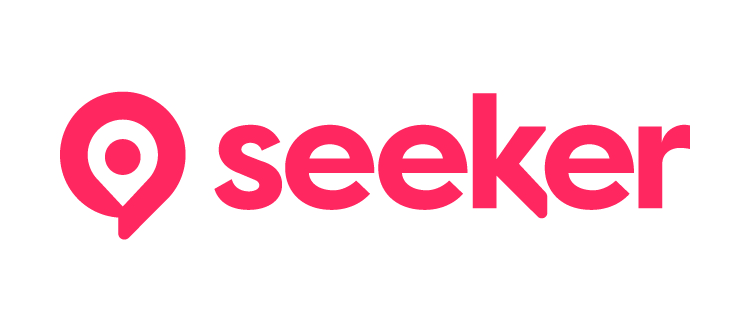Gamification has become a powerful strategy in retail, helping brands enhance customer engagement, drive sales, and create loyalty. By integrating game-like elements into their marketing strategies, retailers can encourage customer participation and interaction in fun and innovative ways. Here are 15 standout examples of gamification in retail that showcase how brands are successfully leveraging this strategy.
But first, what is gamification?
Gamification is the application of game-like elements in non-gaming contexts to enhance user engagement, motivation, and participation. In retail, gamification leverages strategies such as point systems, challenges, rewards, and competition to create interactive experiences that resonate with customers. By integrating these elements into marketing strategies, brands can drive customer loyalty, encourage repeat purchases, and foster a sense of community among consumers. This approach transforms traditional shopping into a fun and rewarding adventure, that stands out.
Let’s look at some of the most memorable examples of gamification in the retail industry.
1. Starbucks Rewards Program
Starbucks has effectively gamified its loyalty program by allowing customers to earn stars for every purchase. These stars can be redeemed for free drinks and food items, encouraging repeat visits. The app also features challenges that enable users to earn bonus stars, fostering engagement and excitement around the brand. This approach not only drives loyalty but also exemplifies experiential marketing by creating a fun, interactive shopping experience.
2. Nike’s Membership Rewards
Nike has expanded its membership program to include rewards for activities beyond just purchases, integrating fitness challenges and community events. Members earn points for participating in local workouts and events, promoting both brand loyalty and physical activity. This comprehensive approach not only strengthens the Nike community but also showcases effective brand activation through gamified engagement.
3. McDonald’s Monopoly Game
The McDonald’s Monopoly promotion is a classic example of gamification in retail. Customers receive game pieces with their purchases, which can be collected to win prizes, including cash and free food. This interactive promotion creates excitement and encourages customers to visit more frequently to collect game pieces.
4. Target’s Cartwheel App
Target’s Circle app allows customers to unlock discounts and deals by completing fun challenges and scanning items while shopping. Users earn points for participation, which can lead to additional savings. This gamified approach enhances the shopping experience by making it more interactive and rewarding. The app is an excellent example of experiential marketing, providing customers with tangible benefits for their engagement.
5. H&M’s Coachella Collection
H&M often ties its seasonal collections to events like Coachella, where customers can participate in social media challenges and earn rewards. Attendees can post photos of their outfits online to win exclusive discounts or merchandise. This activation combines social media engagement with shopping, effectively gamifying the retail experience while enhancing brand visibility.
6. Sephora’s Beauty Insider Program
Sephora’s Beauty Insider program gamifies the shopping experience by allowing customers to earn points for every purchase, which can be redeemed for exclusive products and experiences. Additionally, Sephora offers tiered membership levels, encouraging customers to spend more to reach higher tiers for better rewards. This gamification not only incentivizes spending but also enhances customer loyalty through personalized experiences.
7. GameStop’s PowerUp Rewards Program
GameStop’s PowerUp Rewards program rewards members with points for purchases, which can be redeemed for discounts, exclusive offers, and merchandise. The program also features challenges and promotions that encourage members to engage more frequently with the brand, enhancing loyalty and creating ongoing brand activation.
8. Fitbit Challenges
Fitbit allows users to join challenges where they can compete against friends in step counting and fitness activities. Users can earn badges for milestones achieved, encouraging a sense of competition and camaraderie. This gamified approach fosters engagement with the brand while promoting a healthy lifestyle.
9. Shopkick’s Shopping Rewards
Shopkick rewards customers for walking into stores, scanning products, and making purchases. Users earn “kicks” that can be redeemed for gift cards, incentivizing them to engage with both the app and retail locations. This gamified approach encourages foot traffic and enhances the shopping experience, effectively utilizing event activation to boost customer interaction.
10. Pepsi’s “Pepsi Nation” Rewards
Pepsi has gamified its loyalty program with “Pepsi Nation,” where customers earn points by purchasing Pepsi products. These points can be redeemed for exclusive merchandise, experiences, and giveaways. The program not only incentivizes purchases but also encourages brand loyalty through fun rewards.
11. Walgreen’s “myWalgreens” Loyalty Program
Walgreens has successfully gamified its loyalty program, known as myWalgreens, to enhance customer engagement and promote healthy behaviors. Through this program, customers can earn points for every dollar spent on purchases, as well as for participating in health-related activities, such as getting vaccinated or completing wellness check-ins.
Members of myWalgreens can accumulate points that can be redeemed for discounts on future purchases, making it a rewarding experience that incentivizes spending. Additionally, the program includes personalized offers and exclusive discounts based on individual shopping habits, further enhancing customer loyalty.
Walgreens also encourages members to engage in healthy behaviors by offering bonus points for actions like walking a certain number of steps, participating in health screenings, or joining fitness challenges. This innovative approach blends retail with wellness, motivating customers to prioritize their health while enjoying savings on their everyday purchases. By gamifying the loyalty program, Walgreens not only boosts customer engagement but also fosters a community focused on health and well-being.
These examples of gamification in retail demonstrate how brands can effectively engage customers through interactive and rewarding experiences. By incorporating game-like elements, retailers can enhance customer loyalty, drive sales, and create memorable shopping journeys that resonate with consumers. As the retail landscape continues to evolve, gamification will play an increasingly important role in attracting and retaining customers, making experiential marketing and brand activation essential strategies for success.
